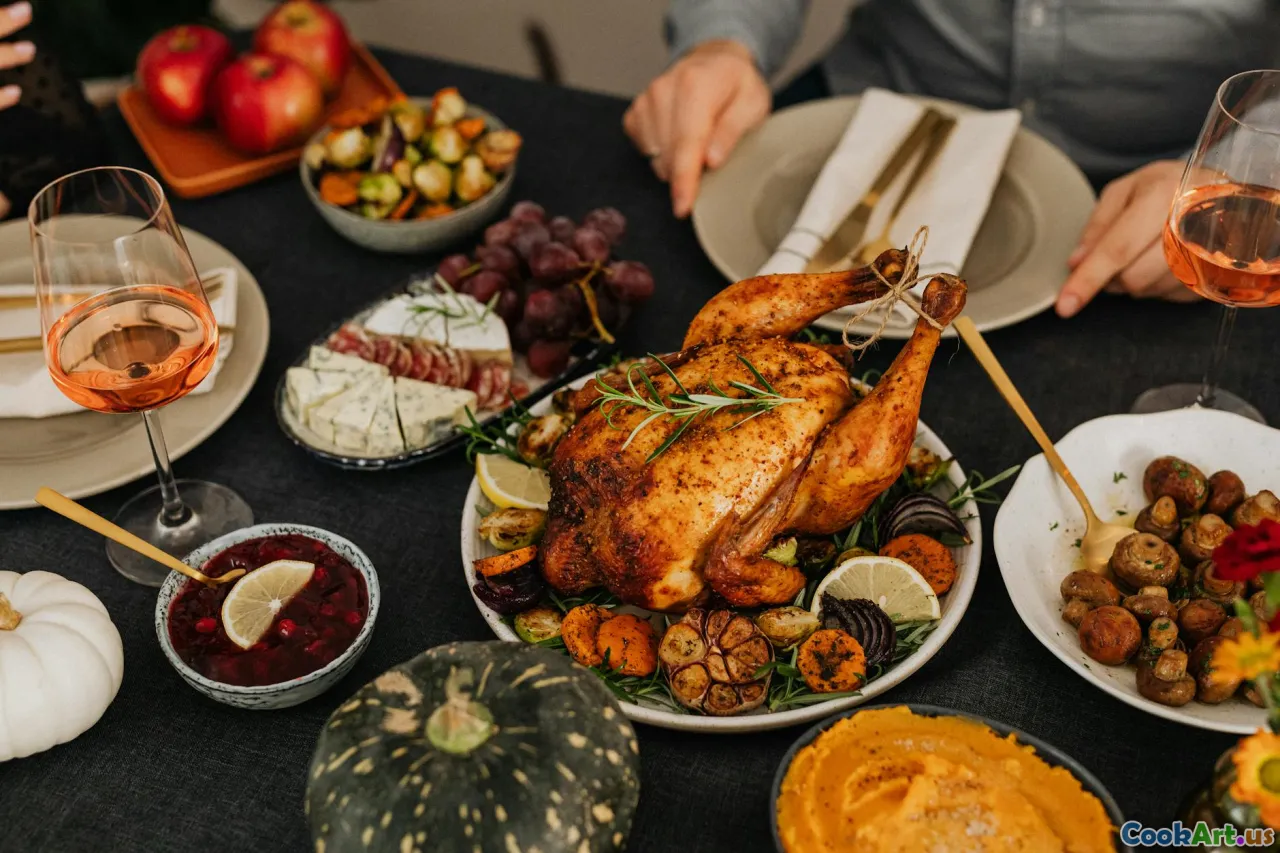Global Festive Foods to Savor
6 min read Explore diverse festive foods from around the globe that capture the spirit of celebration through unique flavors and traditions. April 07, 2025 16:45
Global Festive Foods to Savor
Festivals and celebrations are incomplete without food, and the culinary world is rich with festive dishes that reflect cultural heritage, local ingredients, and unique cooking techniques. As we traverse the globe, we discover an array of festive foods that tantalize the taste buds and evoke the spirit of celebration.
1. Biryani (India)
India's culinary tapestry is woven with spices, and biryani stands out as a festive favorite. This fragrant rice dish, layered with marinated meats or vegetables, often graces tables during weddings and festivals like Eid. The cooking technique involves slow-cooking the ingredients, allowing the flavors to meld beautifully. Each region boasts its own version, but all are celebrated for their rich aroma and taste.
2. Tamales (Mexico)
Tamales are a cherished part of Mexican celebrations, particularly during Christmas and the Day of the Dead. Made from masa (corn dough) filled with meats, cheeses, or fruits, they are wrapped in corn husks and steamed. The preparation is often a communal affair, with families gathering to share recipes and stories. This tradition not only nourishes the body but also strengthens familial bonds.
3. Panettone (Italy)
Originating from Milan, panettone is a sweet bread loaf filled with candied fruits and citrus zest, traditionally enjoyed during Christmas. The process of making panettone involves a lengthy fermentation period, contributing to its unique texture and flavor. It's often gifted and served with a glass of sweet wine, embodying the Italian spirit of togetherness.
4. Pavlova (Australia/New Zealand)
Named after the Russian ballerina Anna Pavlova, this meringue-based dessert is a staple at festive gatherings in Australia and New Zealand. Topped with fresh fruits and whipped cream, pavlova's crispy exterior and marshmallow-like center create a delightful contrast. It's a celebration of summer flavors, often enjoyed during holidays and special occasions.
5. Stollen (Germany)
This traditional German bread, filled with dried fruits and nuts, is dusted with powdered sugar and often enjoyed during the Christmas season. The history of stollen dates back to the 15th century, and it symbolizes the Christ child. Each bite encapsulates the warmth of the festive spirit, with many families passing down their unique recipes through generations.
6. Sufganiyot (Israel)
These delicious jelly-filled doughnuts are synonymous with Hanukkah celebrations. Fried in oil, sufganiyot represent the miracle of the oil that lasted eight days in the temple. Their sweet, sugary exterior and gooey filling make them a festive favorite, enjoyed by families as they gather to light the menorah.
7. Haggis (Scotland)
As the centerpiece of Burns Night celebrations, haggis is a savory pudding made from sheep's heart, liver, and lungs, mixed with oats and spices. Traditionally served with neeps (turnips) and tatties (potatoes), haggis symbolizes Scottish heritage and is honored with a ceremonial address, often accompanied by bagpipe music.
8. Bibingka (Philippines)
Bibingka is a rice cake traditionally enjoyed during the Christmas season in the Philippines. Made with rice flour, coconut milk, and topped with salted eggs or cheese, it is cooked in clay pots lined with banana leaves. This dish reflects the blend of indigenous and colonial influences in Filipino cuisine, and it’s often sold at holiday markets.
9. Kue Cubir (Indonesia)
These bite-sized Indonesian treats are made from rice flour and filled with various sweet fillings, often enjoyed during festive occasions like Eid. Their vibrant colors and playful shapes add a festive flair to celebrations. Making kue cubir is a labor of love, often passed down through generations, showcasing the rich culinary heritage of Indonesia.
10. Jollof Rice (West Africa)
A staple at weddings and parties across West Africa, Jollof rice is a one-pot dish made with rice, tomatoes, and a blend of spices. Each country claims its unique take on Jollof, making it a source of friendly rivalry. The dish embodies the spirit of celebrations, bringing people together over shared flavors and experiences.
Conclusion
Food is an integral part of celebrations around the world. These festive dishes not only satisfy hunger but also tell stories of culture, tradition, and community. As we embrace the spirit of feasting, let us savor the diverse flavors that each culture brings to the table.









